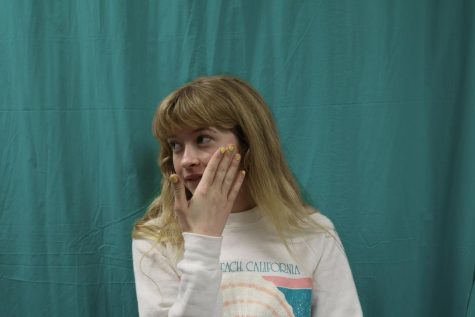As someone who is chronically anemic with poor time-management skills and a busy schedule caffeine is my saving grace. Needless to say, I’d never thought of quitting it. But when I woke up one morning with a pounding headache and tunnel vision for the espresso machine, I figured it might be time to make a change.
The Backstory
What started with iced coffees in seventh grade quickly spiraled into multiple espresso shots a day in high school — and once a short hospital stay for dehydration caused by too many Bang energy drinks.
So, I did what any caffeine-addicted student zombie would do when I came to this epiphany — I watched hours and hours of how-to videos about quitting caffeine and self-transformation videos to boost my willpower.
What I learned was that you should never quit drinking caffeine cold turkey. This results in migraines, fatigue, depressive states; the list goes on. However, from the few times when I was younger and tried to drink less coffee, I found that gradually decreasing my intake would almost always make espresso drinks more enticing, as the steady decline didn’t really have any negative side effects. And although that may sound like it’s not a bad thing, I am someone who almost always has to learn things the hard way.
The Challenge
My goal is to go to my Starbucks shift — uncaffeinated — and record my progress remaining caffeine-free throughout the day. I will touch base every couple hours to paint a picture of caffeine withdrawals that will hopefully show that everything is fine in moderation.
The Main Event
8 a.m. Now is when I’d typically have my double espresso, black. I’ve skipped my morning espresso before when I’m running late, but that is rare — very, very rare.
10 a.m. First 10-minute break of my shift. I have a headache, a big one. I told my coworker that under no circumstances can I have any caffeine, and now I’m realizing I hate her. Maybe coffee makes people more likeable? Writing this is hurting my eyes, my head and everything else.
12 p.m. First 30-minute break. My body feels weak. I’m exhausted even after making sure I got eight hours of sleep for this. Is this stunt worth it? I need to take a nap, and that’s what I’ll do. I’ve taken four acetaminophen today already.
3 p.m. Second 10-minute break. I decide to step outside. I’m sweating bullets after very little movement behind the counter. My coworker told me I look dead. I think this is called withdrawal.
4 p.m. Second 30-minute break. After my break I have one more hour to go before I can go home. I still have the worst headache ever. I think the pain has leveled out, besides the newest pain from the past hour or so of my knees feeling super weak. I knew I’d be in agony, but this much pain is ridiculous. Plus, I’m sweating more than usual.
7 p.m. Turning off all the lights in my apartment and looking at the back of my eyelids for a couple hours. I was looking forward to watching “The Mandalorian,” but I’ll pass.
The Takeaway
Life without caffeine is dull and painstaking. Although I anticipated this, I didn’t think it would be this awful. Is reality only bearable with caffeine in my system, or am I more addicted than I thought? I anticipated a bad headache, but experienced shakiness, fatigue, nausea and joint pain, as well as the internal pain of being perceived as a vampire in front of coworkers and customers.
The hardest part of any journey is the first step, and I figured decreasing my coffee intake gradually will make the weaning process far less painful and frightening overall.
Many students feel the wrath of coffee at some point, but if not, it’s important to be aware that caffeine is addictive if abused. Spending time to fix your sleep schedule, exercise and eat healthy are all ways you can provide natural energy for yourself — alongside a cup or two of coffee every now and then.



